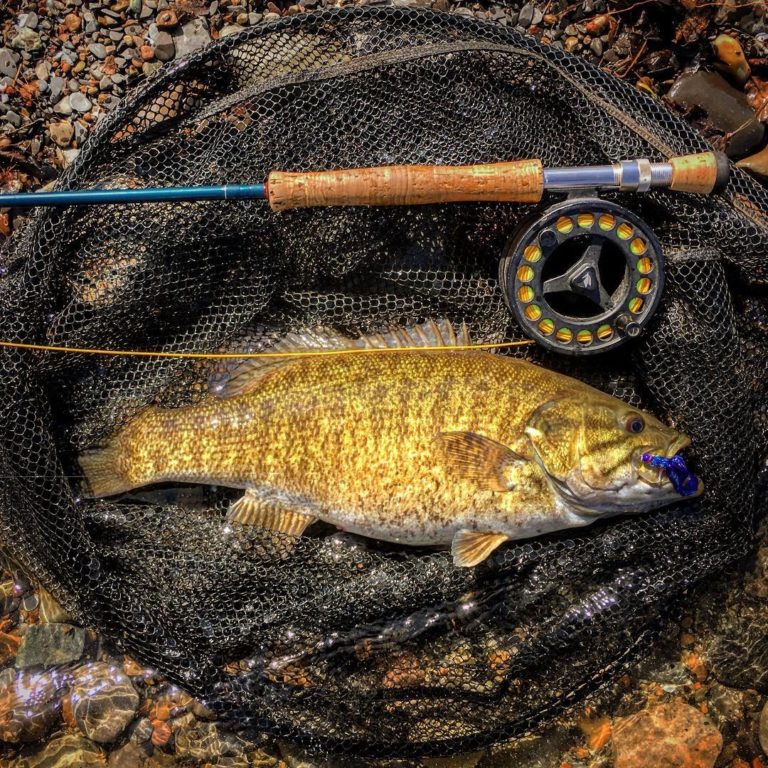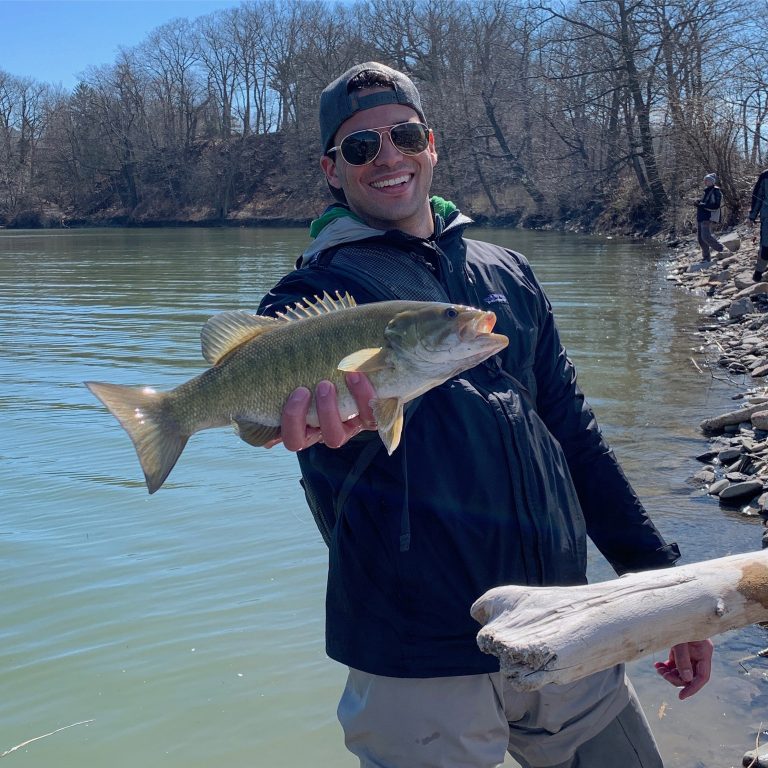The Smallmouth Bass

The smallmouth bass (Micropterus dolomieu) is a warm-water sport fish found throughout western New York. Smallmouth bass typically range between 14 and 20 inches in length and can be identified by their broad, bronze to olive colored body. Smallmouth bass are sometimes called “bronzebacks” because of the beautiful bronze color they can take on, but are more often referred to as “smallies.”
Contrary to the belief of many, a smallmouth bass is not a largemouth bass with a small mouth, and a largemouth bass is not a smallmouth bass with a large mouth! The smallmouth bass is a distinct species from the largemouth bass, though they are both part of the sunfish family. Smallmouth bass have much different body proportionality and coloration than largemouth bass. Interestingly, Lake Erie arguably offers the best smallmouth bass fishing in the world.
Habitat
Smallmouth bass can be found in large lakes including Erie and Ontario and also warm-water creeks and rivers. Smallmouth bass seem to prefer higher water quality than largemouth bass. In lakes, smallmouth bass typically roam deeper areas that have structure or other features that offer the fish a sense of security. Drop-offs and rock piles are exceptionally good places to target smallmouth in lakes.
Smallmouth bass can also be found in creeks and rivers, especially Great Lakes tributaries. In creeks and rivers, smallmouth bass occupy both shallow flats and deep areas (depending on the situation) and can often be seen swimming about.
Food
Smallmouth bass primarily feed on minnows, especially once they are adults. However, smallmouth bass won’t hesitate to snatch up crayfish or worms. Smallmouth bass will also eat large aquatic insects and bugs that land on the surface in creeks.
Where to Catch Smallmouth Bass
Smallmouth bass can be found in Lake Erie and Ontario, their tributaries, the Niagara River, and in other warm-water creeks and rivers in western New York. Smallmouth bass can also be found in other large lakes in western New York including Lake Chautauqua and Silver Lake.
Unlike largemouth bass, smallmouth bass are not stocked in ponds. Unaware people can be very cavalier in their claims of catching smallmouth bass, often saying they catch big smallmouth in the local pond. This is not true. Smallmouth bass are not available in neighborhood or other such ponds. These people are probably misidentifying a largemouth bass “with a small mouth” as a smallmouth bass.
The best time of year to target smallmouth bass is by far the springtime when smallmouth bass run up Lake Erie and Ontario tributaries to spawn. The smallmouth bass run usually starts in early April and can last through mid June. During this time, smallmouth bass are found in almost every Great Lakes tributary, especially in the lower sections. Below is a smallmouth bass caught in Lake Erie during the spawn in April of 2020.

How to Catch Smallmouth Bass
Smallmouth bass can be caught on both live bait and artificial lures. For the live bait fisherman, minnows fished under a float are a good bet. When spin fishing, good lures include stickbaits and softplastics. When fishing stickbaits, try different retrieval methods to figure out what the fish are responding to. Covering water is important when smallmouth fishing, so you should try both shallow and deep diving stick baits to locate fish.
Smallmouth bass can also be caught on the fly. Fly fishing for smallmouth bass is a fun and rewarding experience as smallmouth bass put up a great fight, especially on a light fly rod. Fly fishing for smallmouth is most productive on creeks and rivers. Stripping streamers is probably your best bet when targeting smallmouth on the fly.
One of the most popular places for targeting smallmouth bass in the spring is the mouth of 18 Mile Creek (Erie). As of 2017, the mouth of 18 Mile Creek is posted under private ownership from the mouth to about 50 yards downstream of the bridge (look for the signs). This posted section of creek is only open to fly fishing catch and release only from the water. Fly fishing only means spin fishing and centerpin fishing are NOT ALLOWED. Please be respectful of this rule. There are miles of water for spin fishermen upstream of the bridge.
